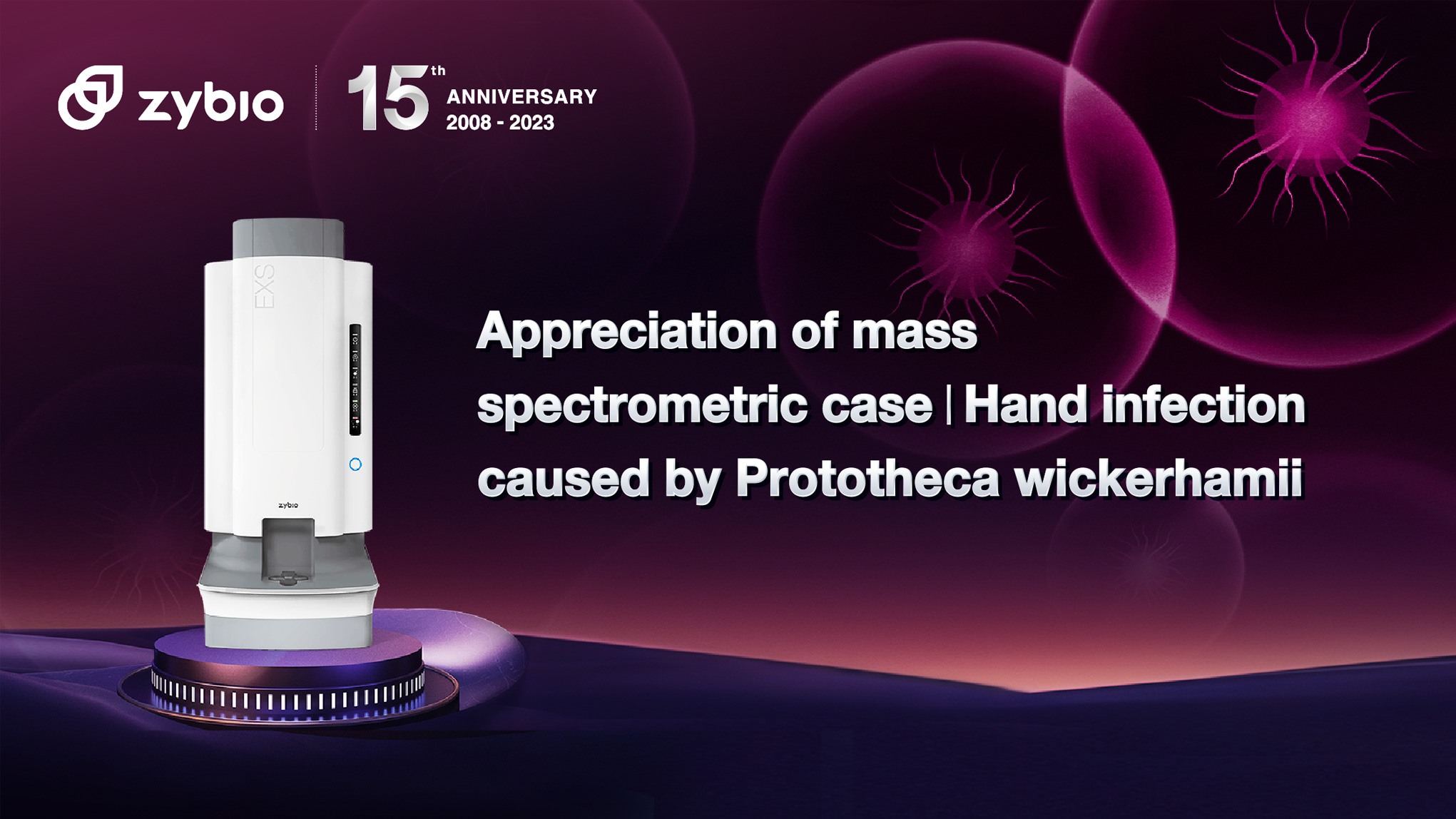Appreciation of mass spectrometric case | Hand infection caused by Prototheca wickerhamii
Nov 17,2023 Zybio News
By Guo Jian, Southern Division of Shanghai East Hospital
Editor's Note: This article is about the practical application of the mass spectrometer EXS3000 manufactured by Zybio Inc. in the Southern Division of Shanghai East Hospital.
01/ Case Description
An 85-year-old female patient reported that her hand skin was infected after being accidentally stabbed when she was sorting garbage in a trash can in a residential area one month ago before admission. She also reported that after applying ointment herself, her condition did not improve, and her hand skin was obviously damaged. Afterwards, she came to the Dermatological Department of our hospital for treatment. The dermatologist scraped the secreted pus with a disposable sampling swab and sent it to the clinical microbiology team of the laboratory for culture and smear detection.
02/ Case Analysis
We cultured the pus sample on an SDA plate for 72 hours. By observing the colony morphology on the plate, we found that it was very similar to those of candida and yeast (Figure 1). After Gram’s staining, a shell-like substance was observed under the microscope, but the body of the fungus was vague (Figure 2). After microscopic examination of the fungus by immunofluorescence staining, we observed that the fungus was spherical (Figure 3). Using conventional instruments for further identification, we did not obtain any accurate identification results. According to our experience and what we learned during the Fungal Biodiversity Centre (CBS) training course; we suspected that the fungus was Prototheca. Later, through comprehensive analysis with different identification methods, we identified that it was Prototheca. Then, we further performed the drug sensitivity test in vitro and recommended using amphotericin B for treatment. After about one month's treatment, the patient's condition improved obviously (Figure 4).
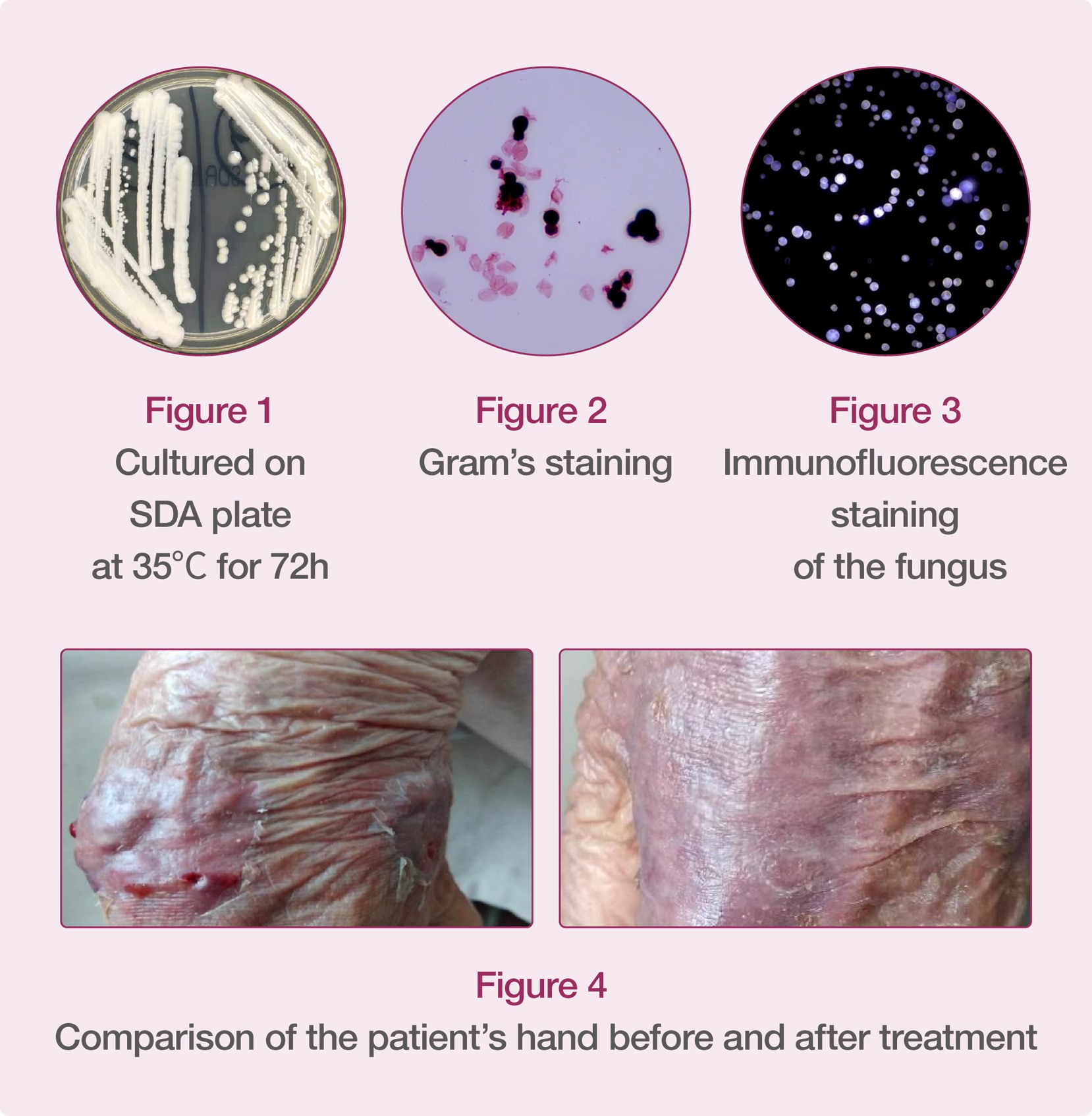
In this case, due to the limitations of the identification method, it took a long time to identify Prototheca. A faster and more accurate identification method can provide a clearer basis for subsequent treatment. Therefore, we carried out a series of clinical studies to establish a rapid identification method of Prototheca in the laboratory and improve our detection ability of the fungus. In the research process, for Prototheca, a yeast-like fungus, we preferred to use ITS sequencing, but the sequencing failed. Later, by referring to literature, we changed to 16S rRNA sequencing, and the identification result was Prototheca wickerhamii, as shown in Figure 5. Although the method of gene sequencing can identify Prototheca, it still takes a long time to do so.
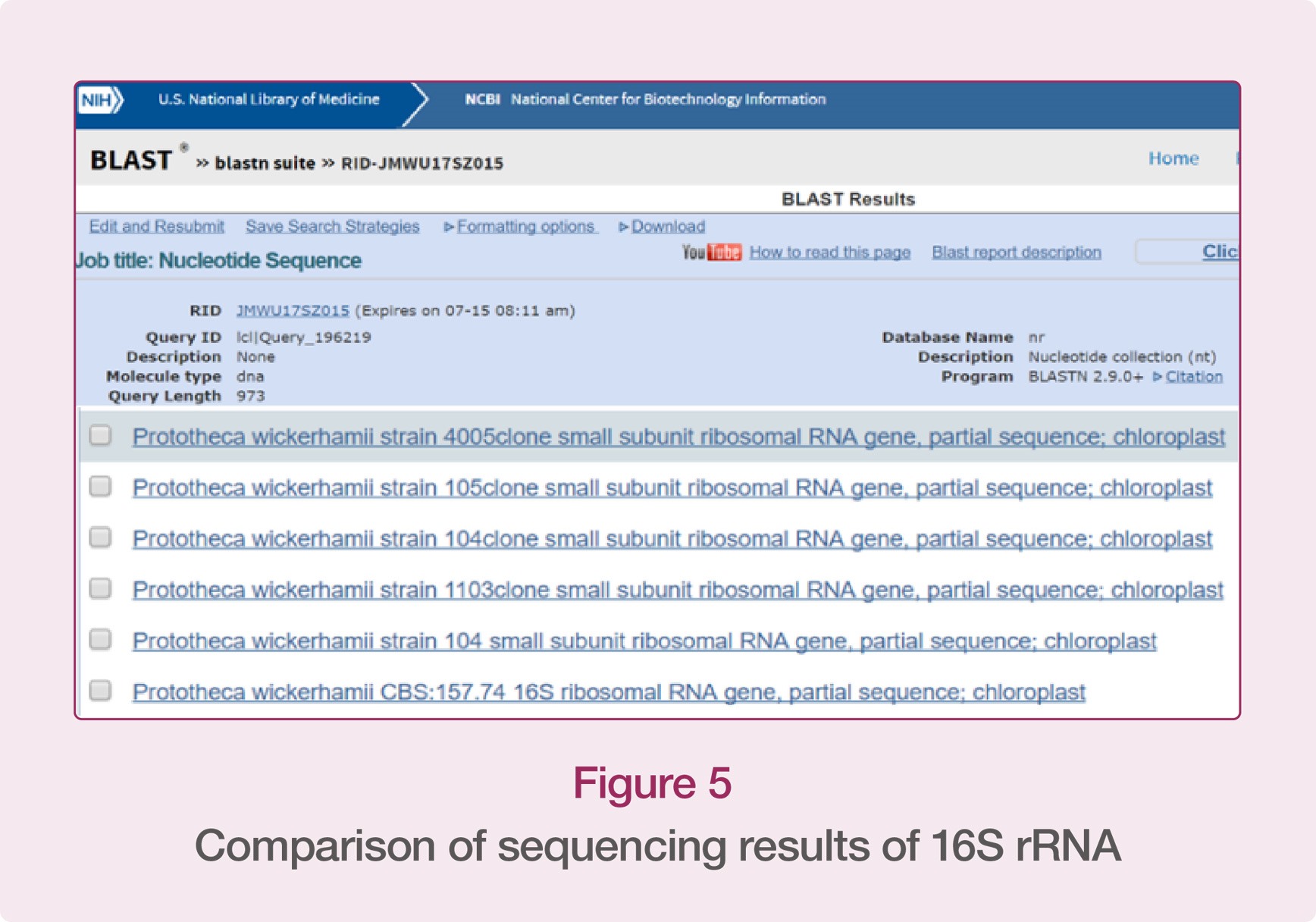
Compared with the above methods, mass spectrometry has the advantages of high analysis speed, low cost, and high identification accuracy. In fact, it is more convenient and faster to adopt mass spectrometry in clinical microbiological examination. We hope that we can identify Prototheca a rare fungus, through mass spectrometry in the future. With the support of the R&D personnel of Zybio Inc., we optimized the pretreatment method of Prototheca and improved the database (Figure 6). With the optimized method, the spectrum quality of Prototheca was improved and the identification result was more accurate (Figure 7). The verification result showed that the accuracy of species identification was 96.55% (28/29), and that the accuracy of genus identification was up to 100% (29/29). Moreover, it only took 20 min to complete the pretreatment and mass spectrometry detection, and the speed of fungus identification was greatly increased. In addition, we further used the software of EXS3000 to perform clustering analysis of 29 strains of Prototheca, and realized the effective distinction between Prototheca zopfii and Prototheca wickerhamii (Figure 8), which proved that mass spectrometry can be used for both routine microbiological assay and homology analysis.
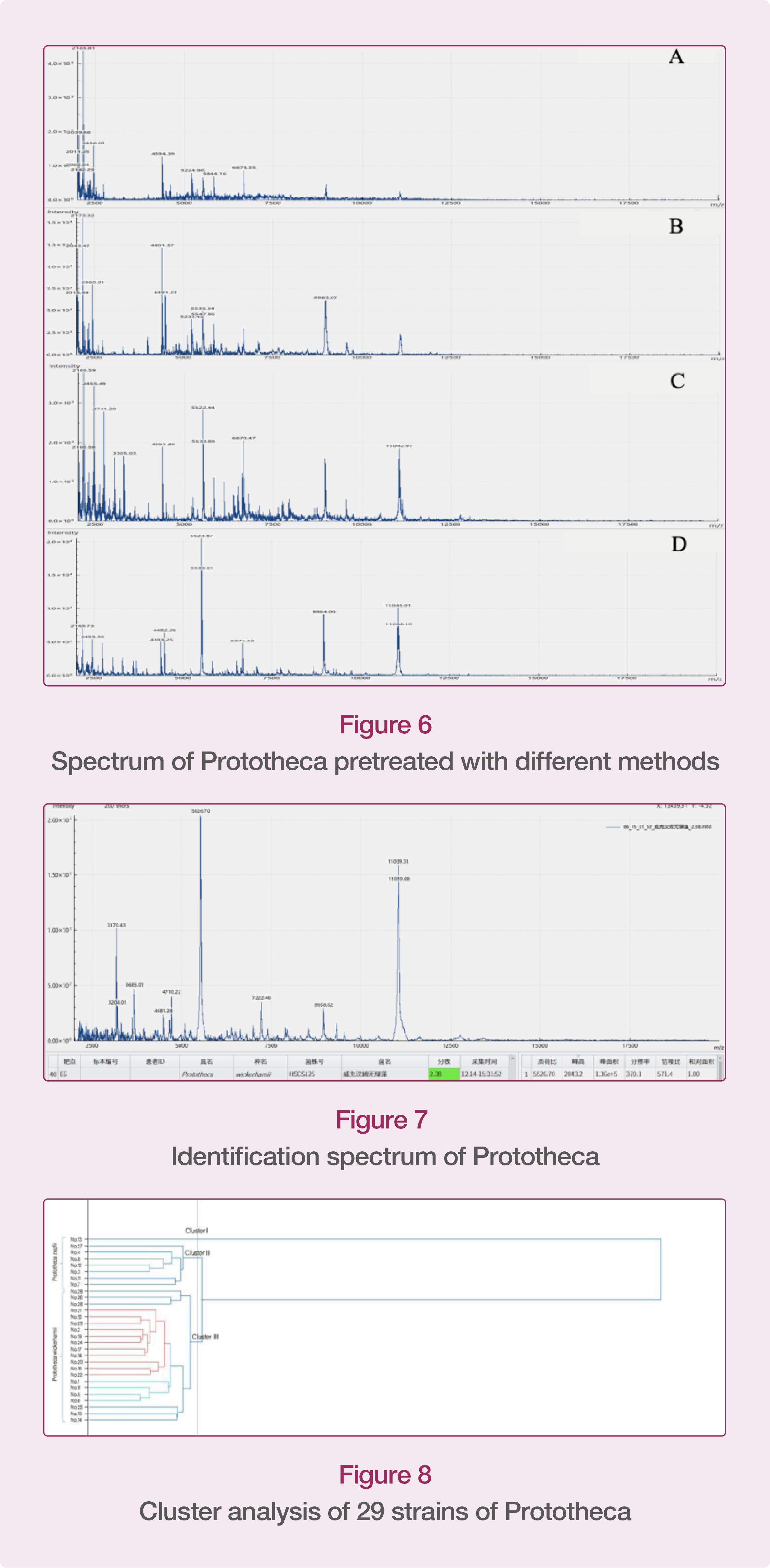
03/ Conclusion
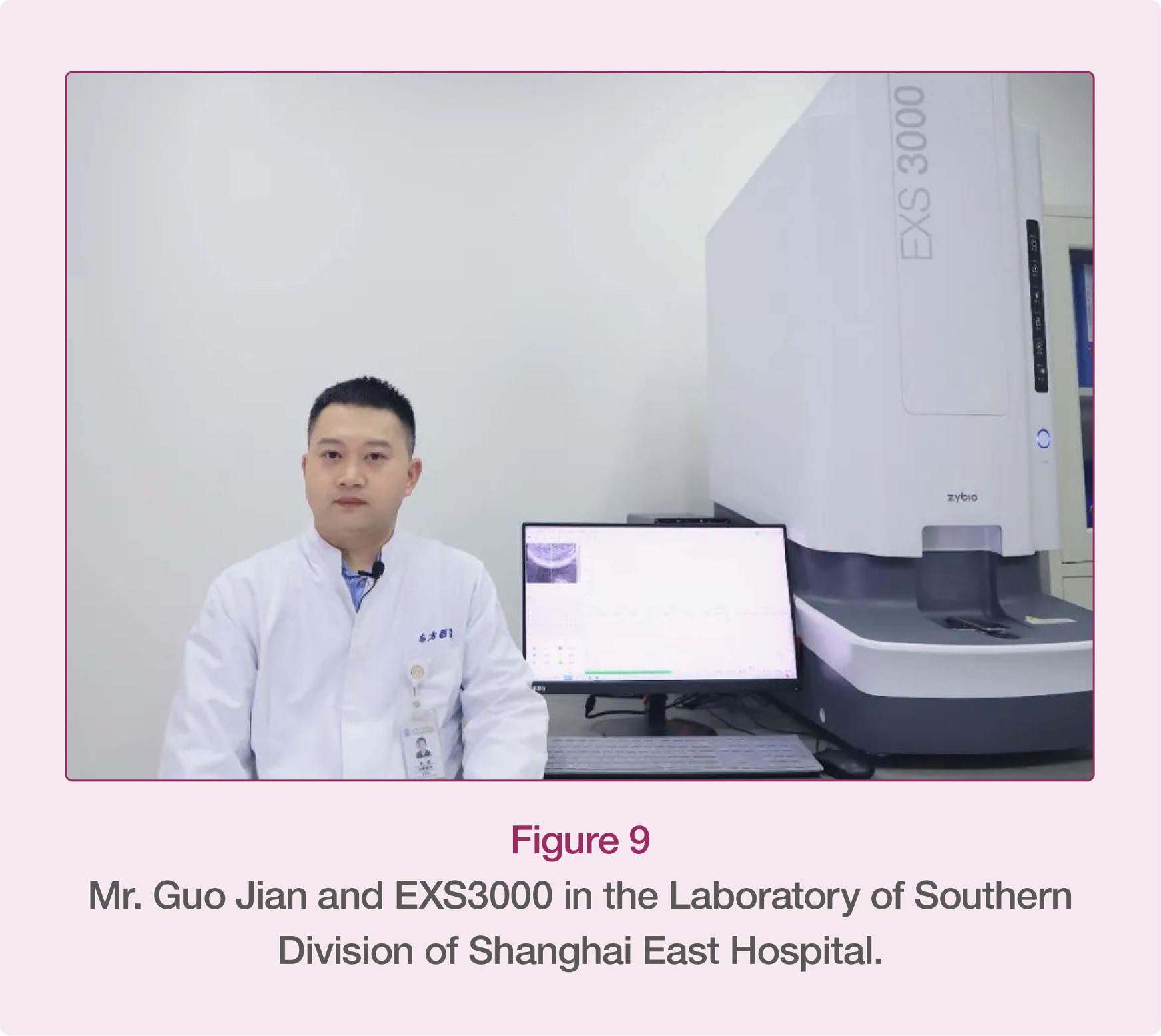
References
[1] 曾炫皓,章强强.全球近10年无绿藻病例报道文献的回顾[J]. 中国真菌学杂志, 2016, 11(5):310-315.
